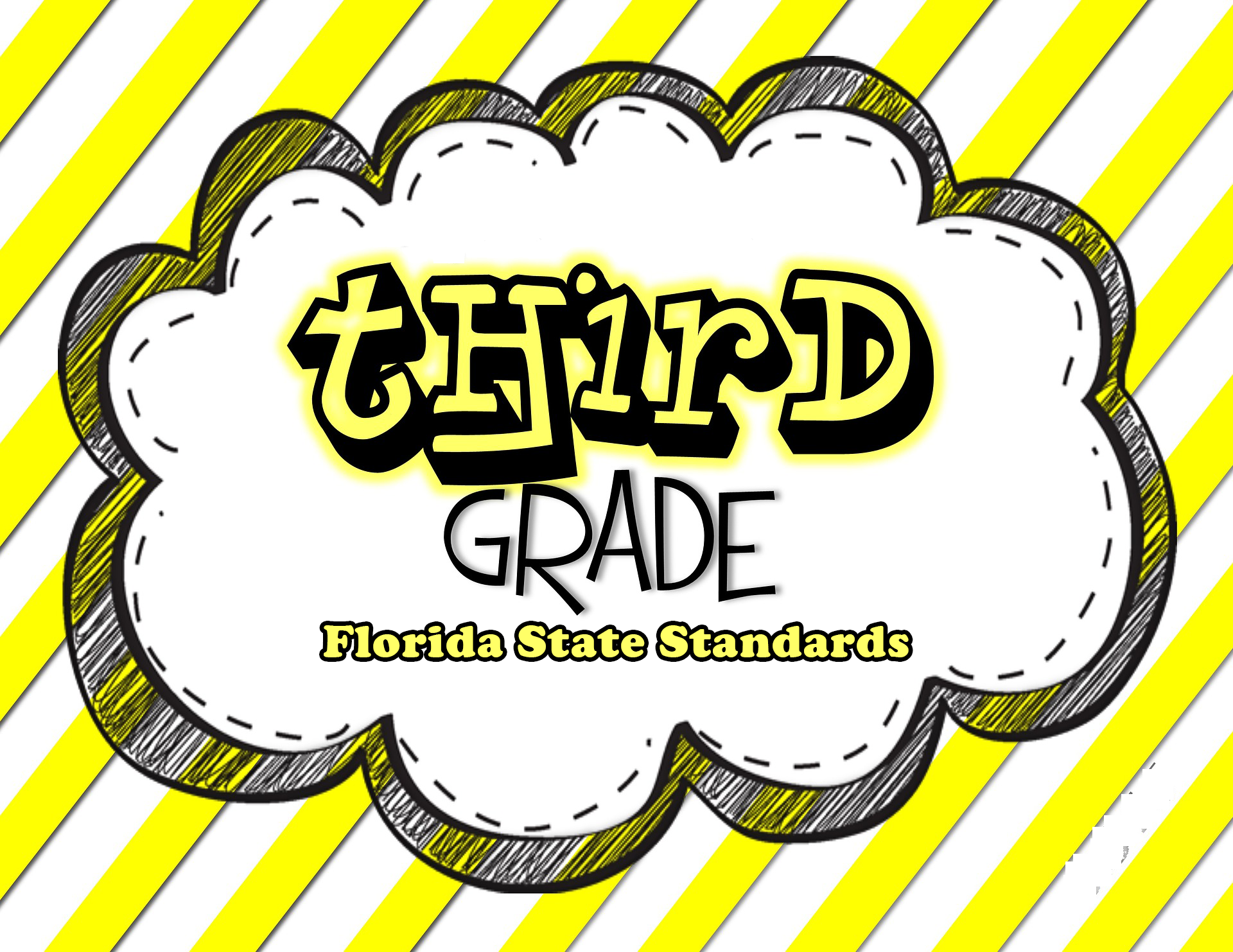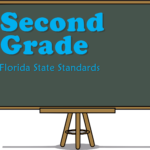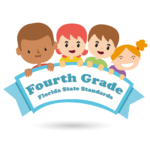We know that for many people, one of the first concerns they have with homeschooling is “falling behind.” While seasoned homeschoolers will tell you, there’s no such thing (all kids learn at their own pace, whether at home or school, and homeschooling gives you the freedom to move at that pace); sometimes it’s comforting to check-in with what’s required in the public schools. Reading through the state standards can be overwhelming if you aren’t a teacher, so we’ve condensed them into easy to read and understand plain language. You can access the original state standards on CPALMS.org
Use can use these standards to help you decide what level of curriculum to use, to keep track of gained skills during the year, or to assess progress throughout the year.
Download the Checklist for Third Grade Florida State Standards.
ENGLISH LANGUAGE ART (ELA), THIRD GRADE
WRITING
- Demonstrate beginning cursive skills
SPELLING
- Addition of suffixes to base words
- Use of spelling patterns and generalizations in written words, such as word families, syllable patterns, ending rules, etc.
- Continue mastery of consulting reference materials to check and correct spelling
GRAMMAR WHEN WRITING OR SPEAKING
- Explain the general functions of nouns, pronouns, verbs, adjectives, and adverbs
- Ensure subject-verb and pronoun-antecedent agreement
- Appropriate use of comparative and superlative adjectives and adverbs
SENTENCE STRUCTURE
- Continued mastery of capitalization, including words in titles; comma use, including addresses; and form and use of possessives
- Continued mastery of comma use, including addresses
- Beginner understanding of quotation format
- Use of coordinating and subordinating conjunctions
- Production of simple, compound, and complex sentences
- Beginning recognition of word choices for effect
- Acknowledge differences between spoken and written English
VOCABULARY
- Continued mastery of context clues, affixes, roots, and reference materials to discern meanings
- Identification of literal and non-literal meanings of words in context
- Distinguish shades of meaning among related words describing states of mind or degrees of certainty (knew, believed, suspected, heard, wondered)
READING
- Identify the meaning of most common affixes
- Decode multisyllable words
- Read on-level text with purpose and understanding, orally and silently, with appropriate accuracy, rate, and expression
- Self correct word recognition and understanding by rereading grade-level texts
- Read on-level text with appropriate comprehension, rate, and expression
READING COMPREHENSION
- Answer questions to clarify and demonstrate understanding of grade-level texts, referring explicitly to the text
- Distinguish their own point of view from that of the author or narrator of a text
- Determine meaning of general academic and domain-specific words and phrases in grade-level texts
- Continued growth relating to illustration/graphic interpretation, relationships between ideas or characters, comparing/contrasting two related texts
- Continued development of identification and articulation of morals or lessons of a text, identifying main ideas and details, and character contributions
- Refer to specific parts when speaking about a text, such as chapter, scene, stanza, etc
- Read and comprehend literature, including stories, dramas, and poetry at grade level
- Continued mastery of engaging in discussions about literature, including expressing their ideas clearly, preparing discussion points, asking questions, appropriate responses, defending their own ideas, use of complete sentences when responding to questions or comments
- Demonstrating thoughts, opinions, knowledge of text using diverse formats, including visually, quantitatively, and orally
COMPOSITION
- Continued growth writing opinion pieces, including introduction, opinion, appropriate organizational structure to list reasons, use connecting words (because, therefore) to link opinion and reasons, conclusion
- Clearly write informative/explanatory texts to convey ideas, including an introduction; grouping related information together; illustrations or visual aids; development of idea using facts, definitions, and details; linking words (also, another, and, more, but) to connect ideas within categories; and appropriate conclusion. Conduct short research projects that build on knowledge.
- Narrative writing of real or imagined experiences using appropriate technique, descriptions, and clear event sequences, including scene setting and character introduction; use of dialogue, feelings, and character responses; temporal words or phrases to signal order of events; and closure
- With guidance, produce writing in which development and organization are appropriate to task and purpose, including varying timeframes (time for research and reflection vs. a quick, one-sitting writing project)
- Continue growth on editing, accepting feedback from adults and peers
- Use of technology to publish work
Download the Checklist for Third Grade Florida State Standards.
MATH, SECOND GRADE
GEOMETRY
- Understand that shapes in different categories (rhombuses, rectangles) may share attributes (four sides), and that the shared attributes can define a larger category (quadrilaterals). Also comprehend quadrilaterals that do not belong to any subcategories
FRACTIONS
- Partition shapes into equal parts and express as a fraction
- Recognize that a fraction is the quantity formed by a part when a whole is partitioned into equal parts
- Understand fractions as a number on a number line, defining the intervals from 0 to 1 as the whole and partitioning it into equal parts
- Express whole numbers as fractions (3/1 = 3) and recognize fractions that are equivalent to whole numbers
- Explain equivalence of fractions and compare simple fractions by size
- Compare two fractions with the same numerator or the same denominator. Recognize comparisons are only valid when the two fractions refer to the same whole. Use >, <, = to express comparisons
MEASUREMENT
- Measure and estimate liquid volumes and masses of objects using standard units (grams, kilograms, liters)
- Complete one-step word problems to add, subtract, divide, multiply volume or mass given in the same units
- Measure using a ruler to the half and fourth inch
AREA
- Recognize area as an attribute of plane figures and understand concepts of measurement
- Measure area by counting unit squares, both standard and improvised units
- Relate area to operations of multiplication and addition using whole numbers, such as finding the area of a rectangle by adding or multiplying the side lengths
- Recognizing area as additive, such as finding areas of figures by decomposing them into non-overlapping rectangles and adding the areas of the parts, and applying this technique to solve real-world problems
- Finding unknown side lengths using known perimeter length
TIME
- Tell and write time to the nearest minute using analog and digital clocks
- Solve word problems involving addition and subtraction of time intervals in minutes
PLACE VALUE/NUMBER FLUENCY
- Use place value to round whole numbers to the nearest 10 or 100
EQUATIONS
- Fluently add and subtract within 1,000
- Multiply one-digit whole numbers by multiples of 10
- Interpret products and quotients, understanding the concept of multiplication as counting equal groups and division as splitting into equal groups
- Use multiplication and division within 100 to solve word problems, using a symbol to represent the unknown
- Determine the unknown variable in a multiplication or division equation relating three whole numbers, such as 8 X ? = 48
- Recognize the commutative property of multiplication and addition
- Recognize the inverse relationship between multiplication and division
- Memorization of all products of two one-digit numbers (times tables 0-9)
- Solve two-step word problems using addition, subtraction, multiplication, division. Represent these problems using equations with a letter standing for the unknown quantity.
- Practice checking own work using standards of reasonableness, including estimation and rounding
- Identify patterns in arithmetic, such as within the times table (4 times a number is always even)
DATA ANALYSIS
- Draw a scaled picture graph and bar graph to represent a data set with several categories.
- Solve one and two-step word problems using information provided in graphs
Download the Checklist for Third Grade Florida State Standards.



